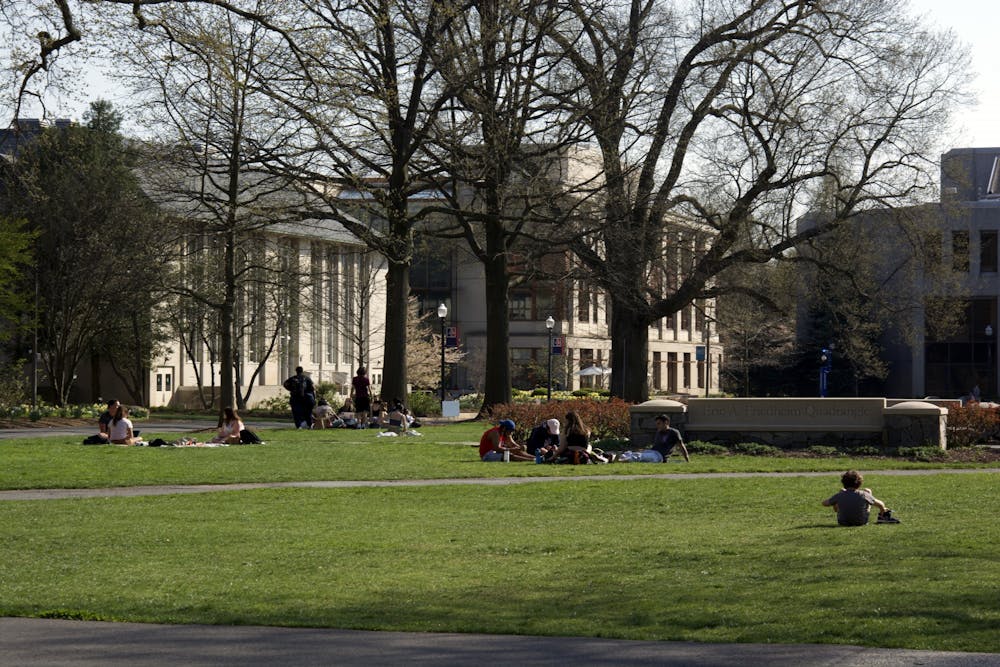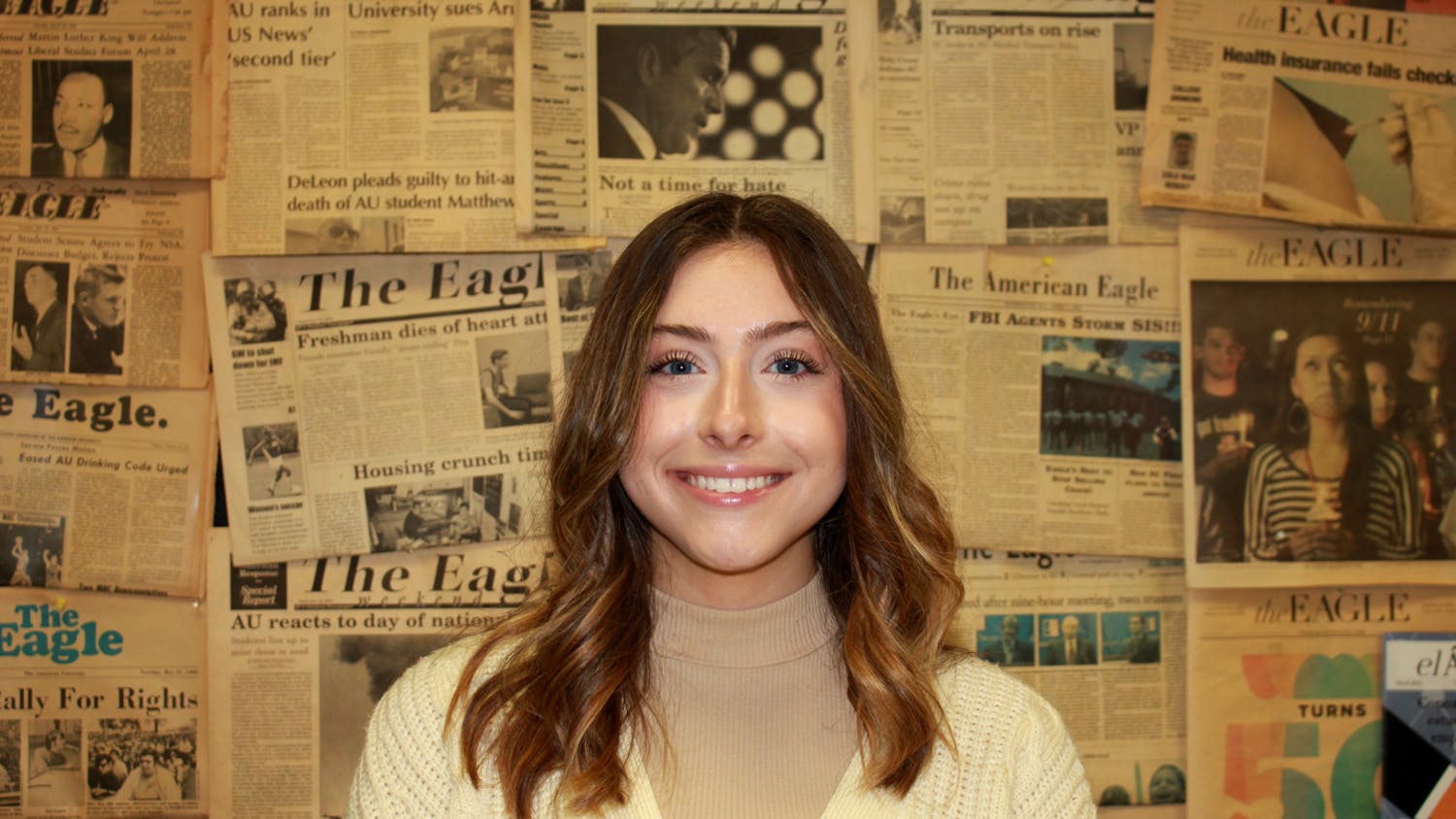At a community forum on Sept. 1, American University officials announced a “layered approach” to promote health and safety as campus operations resume in-person in the midst of the coronavirus pandemic.
Each tier of the five-layer plan addresses a different measure that the University is taking to mitigate infection risk among students, faculty and staff. These layers include vaccination, masks, testing, contact tracing and education.
Contact Tracing
The primary focus of the community forum was to provide updates on the University’s contact tracing procedures for the semester. Leanne Wright, AU’s associate director of environmental health and safety, announced that the University has developed its own contact tracing team with step-by-step plans for how to address any new COVID-19 cases on campus.
University-affiliated testing labs alert the contact tracing team about positive test results at the same time as the infected individual is notified.
After notifying the positive individual of their status, the contact tracing team will proceed to inform any potential close contacts. Wright said that the University will closely align its definition of a “close contact” with that of the Centers for Disease Control and Prevention, which includes individuals who have been within six feet of an infected person for at least 15 minutes total over the course of a 24-hour period during the “infectious period.” The infectious period is considered to be 24 hours prior to the date of the positive test result or when symptoms began — this will be determined on a case-by-case basis according to whichever date is earliest, according to Wright.
Close contacts will be asked to get tested within 3 to 5 days, as this is the window of time following the virus’s typical incubation period when test results are most likely to begin detecting infection. While awaiting these test results, fully vaccinated people will not be required to isolate as long as they are asymptomatic.
The close contact designation will not include community members who had incidental contact with an infected individual — such as passing in the hallway.
While the contact tracing team will not consider incidental exposure, Wright said that there will be certain instances when community members with “proximal contact” to a COVID-19-positive individual will be notified. Proximal contacts include people who have not necessarily been within a six-foot distance of the infected individual, but who do share some sort of common space — like a residence hall, classroom or office — during the infectious period. These individuals will not be required to quarantine, but will receive an email from the University with a request to get a surveillance test.
Once positive test results are received, the contact tracing team will close the University case file and pass it along to the DC Department of Health’s epidemiology team, which will conduct its own investigation and also call the patient to follow up.
Wright asked community members to get tested at one of the University-run testing centers, but individuals who receive a positive result at an unaffiliated testing site are asked to self-report on the Health Portal. Wright also encouraged community members to ensure that the phone number associated with their University portal is up-to-date, as this will be the main means of contact from the contact tracing center.
In an email sent out to the University community on Tuesday, President Sylvia Burwell announced a COVID-19 dashboard tracking confirmed cases, self-reported hospitalizations and the number of total tests administered. During the Sept. 1 forum, Vice President and Chief Communications Officer Matt Bennett said that this tracker is expected to be updated every Tuesday.
According to the dashboard’s current data, there have been 22 confirmed cases reported on campus during the fall 2021 semester and zero hospitalizations. So far, 2,161 tests have been administered at campus sites.
Vaccination
Vice President of Campus Life and Inclusive Excellence Fanta Aw shared that when it was announced in April, AU was one of the first universities in the country to mandate vaccinations for the fall 2021 semester — with only a few exemptions caused by health or religious reasons.
Aw reported a community-wide vaccination compliance rate of more than 98 percent, including 12,460 fully vaccinated students — this figure comprises 99 percent of residential students and 95 percent of total AU students. She also said that 3,909 of faculty and staff are fully vaccinated — 97 percent of the University’s faculty/staff population. These numbers reflect the most recent data as of Sept. 1, Aw confirmed to The Eagle.
According to Aw, community members who sought vaccination exemptions went through a rigorous approval process that the University conducted in partnership with the DC Department of Health. At this point, the most recent data shows that one percent of the University’s respective student population (72 individuals) and staff and faculty population (118) have successfully obtained these exemptions.
To verify their immunization status with the Student Health Center, students had to upload proof of vaccination to their Student Health Portal by August 17. Faculty and staff were asked to complete an assessment form including the name of the vaccine that they received and the date(s) on which they were administered, but they were not required to submit proof of immunization.
In response to the CDC’s announcement that booster shots will be recommended 8 months after an individual’s second dose of the Pfizer or Moderna vaccines, Aw acknowledged that the University will follow whatever recommendations the CDC offers once the boosters are fully approved by the Food and Drug Administration.
Aw also mentioned reports of a national decrease in influenza cases last year, as many facilities were still operating fully remotely. Noting the in-person campus presence this semester and the overall relaxation of lockdown restrictions across the country, Aw encouraged community members to get vaccinated against the flu this season in order to mitigate further health and safety risks.
Masks
Aw reiterated the University’s existing face covering policy, which requires all individuals to remain fully masked indoors at all times regardless of vaccination status. Vaccinated community members are allowed to remove their masks when in groups of under 25 people outdoors, while unvaccinated individuals must remain masked outdoors at all times.
The University has not released specific physical distancing guidelines at this time. Aw said that administrators did not deem this necessary due to the community’s high vaccination rate and comprehensive masking policy.
On Sept. 1, Aw mentioned that the University has received reports of “challenges with masking in certain buildings.” She asked that all community members take initiative to encourage others to abide by the policy.
Testing
The University currently runs two COVID-19 testing sites — one in Constitution Hall and one at the Washington College of Law. On Wednesday, Aw announced the opening of a third location at the WAMU American University Radio Station on Connecticut Avenue.
With the high University-wide vaccination rate, Aw acknowledged that most reported cases will likely be breakthrough infections.
Due to this possibility, Aw specified that community members are allowed to get tested at these sites “no matter what” — regardless of their vaccination status or whether they are symptomatic.
Education
As University officials learn more information about the likelihood of breakthrough infections and other COVID-19-related concerns, Aw asked that community members cooperate with the University’s “red zone” status for its first two weeks of operations. She mentioned the administration’s intention of initiating a “slow and methodical approach” to the campus return, limiting the amount of external visitors and in-person activities that will be permitted.
Dan Nichols, the University’s assistant vice president of Risk, Safety & Transportation Programs, described an updated cleaning protocol that has been developed as a result of learning more about how COVID-19 is spread. The University will be returning to “standard cleaning procedures” for regular classroom settings while continuing to frequently sanitize high-touch surfaces like door handles. Community members are asked to maintain responsibility for cleaning their own workspaces.
While these particular sanitation efforts will not be as in-depth as they were planned to be for the fall 2020 semester, other steps have been taken to promote a sterile environment on campus. Nichols said that, per CDC recommendations, there will be increased airflow into all University buildings, as well as upgraded air filters in accordance with CDC guidelines and D.C. DOH standards.
Aw encouraged any unvaccinated community members to seek immunization if possible, noting that the primary purpose of the vaccine is not to completely prevent infection but rather to reduce the risk of severe illness and hospitalization. She said that the University’s main goal is to avoid extreme cases and hospitalizations.
In the event of a larger scale outbreak, Bennett said that there is a “very low probability” of returning to the same fully remote operations and lockdown status as earlier on in the pandemic, based on current health conditions and vaccination rates. However, he said that the University is prepared to take steps if conditions change — for example, if a new vaccine-resistant variant of COVID-19 emerges.
To continue reinforcing the idea of “community of care” in handling the pandemic, Aw asked all faculty members to include information about COVID-19 proceedings on their syllabi as well as to facilitate candid conversations on the subject.
“We all have an incredibly important role to play in the health and safety of our community,” Aw said.





